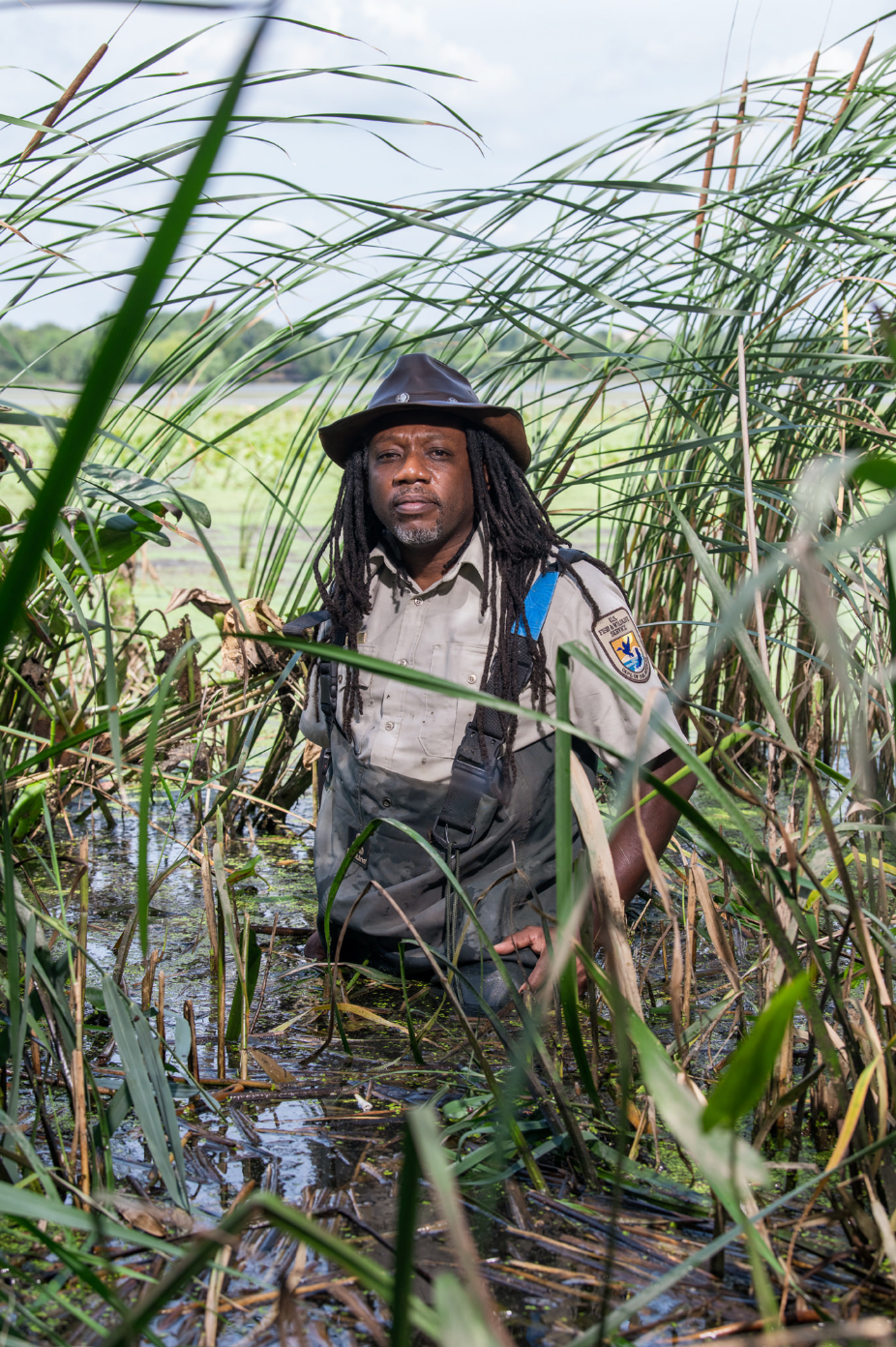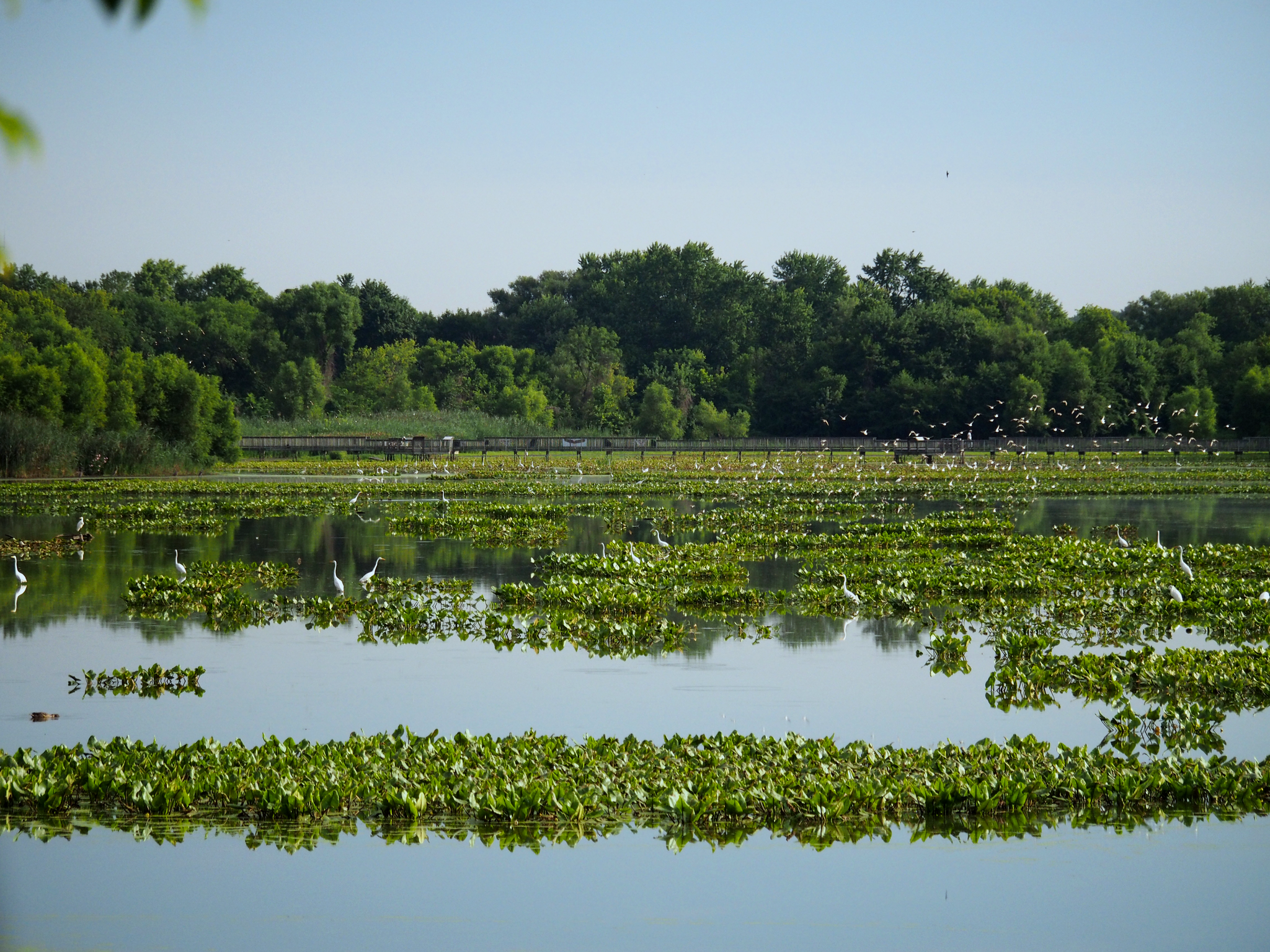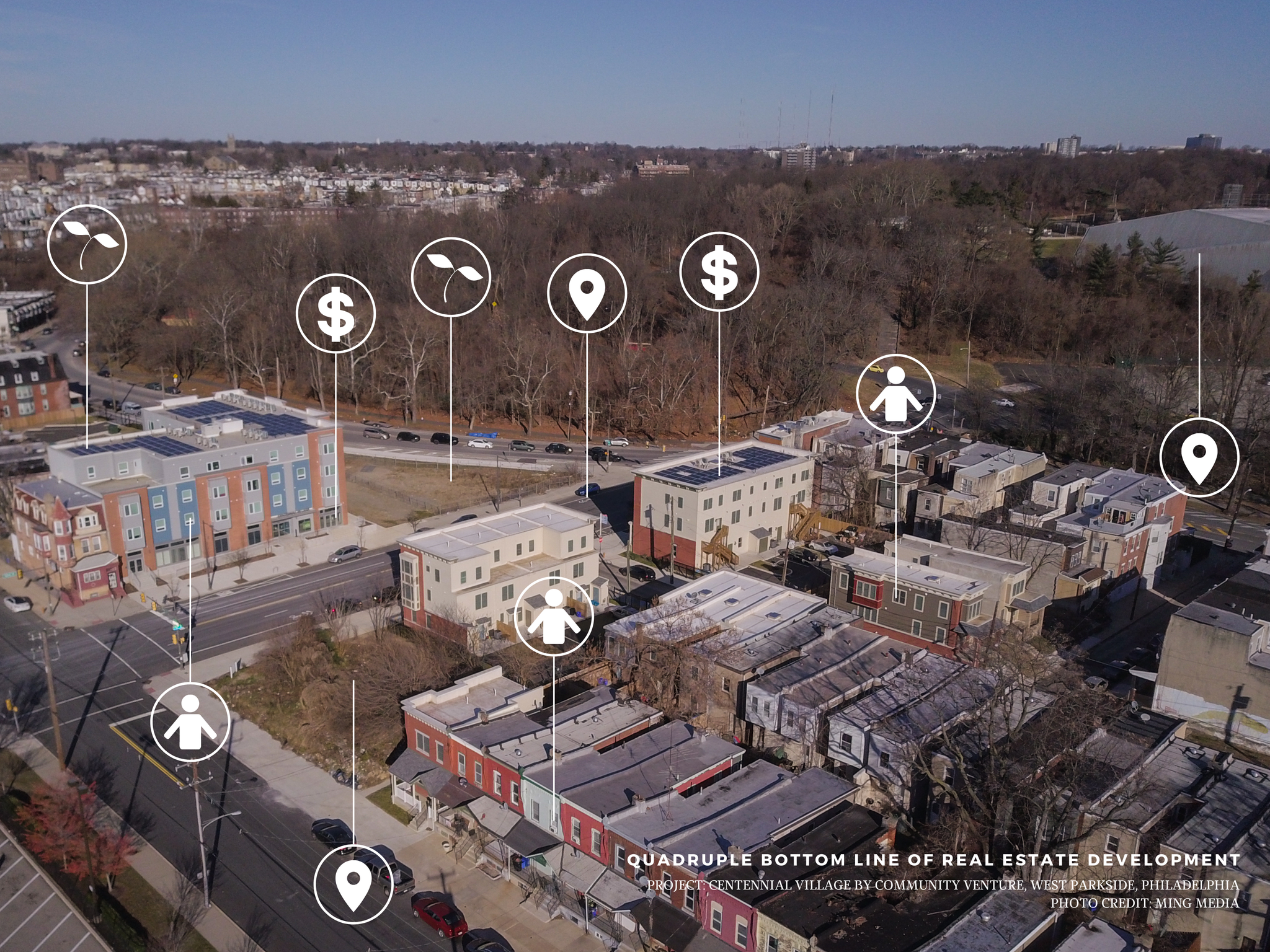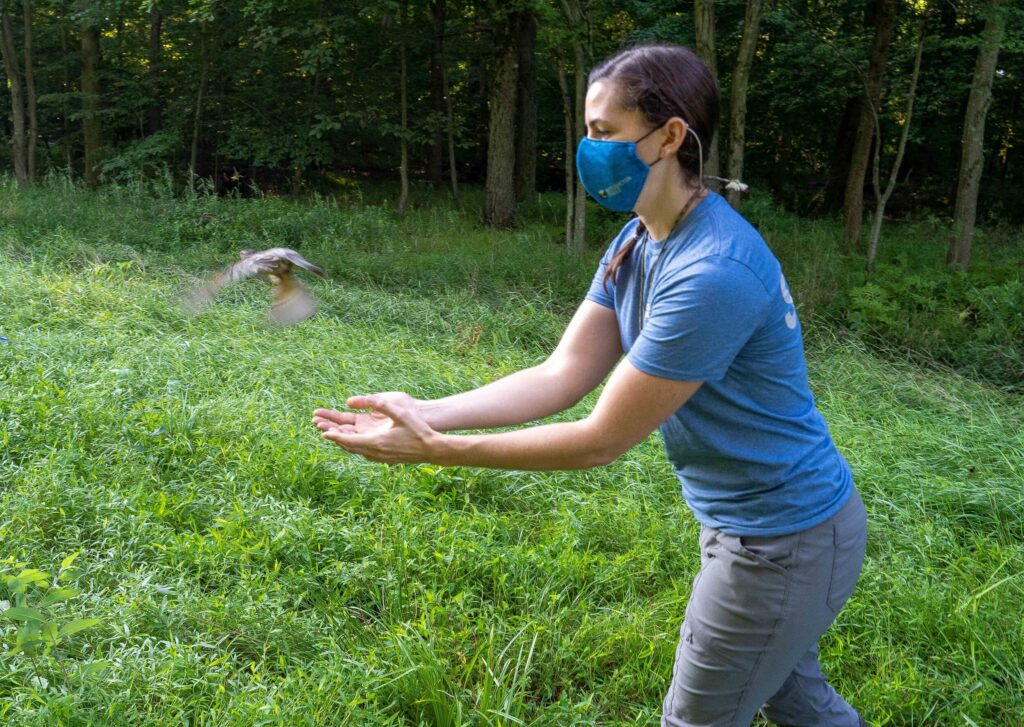Refuge manager Lamar Gore watched as Tropical Storm Isaias tore up footpaths and surged over the boardwalk at John Heinz National Wildlife Refuge at Tinicum. “It was too much for the banks to hold,” says Gore.
Gore’s place of work, John Heinz, is the first and largest urban refuge in the United States. It is responsible for protecting the largest remaining freshwater tidal marsh in Pennsylvania. One month after Isaias, in August, the 1,000-acre refuge is still closed to the public as commercial pumps suck water from one side of the marsh and deposit it to the other. The trails are unnavigable and parts of the boardwalk and bridges have crumbled.
“I’ve seen bad flooding,” Gore says, “but in my six years here, it’s the worst impact I’ve seen in Eastwick.” The refuge and the adjacent Eastwick neighborhood in Southwest Philadelphia, suffer from chronic flooding, due primarily to the major loss of wetlands over the years. Tropical Storm Isaias presented “a worst-case scenario” for both the residents of Eastwick and the refuge, says Gore.
The community of Eastwick was built upon marshland. What used to be 6,000 acres of tidal marsh is now 300-400 acres. Residents have reported that many homes in Eastwick are sinking.
There are several sources of chronic flooding in Eastwick. The Schuylkill River pushes groundwater into Eastwick during heavy rainfall events, and Cobbs Creek and Darby Creek converge in Eastwick, just north of the refuge. Before the area was developed, the swelling of floodwaters would have been absorbed by the area’s sponge-like wetlands. Where only an underdeveloped floodplain used to be affected, there are now homes, says Gore.
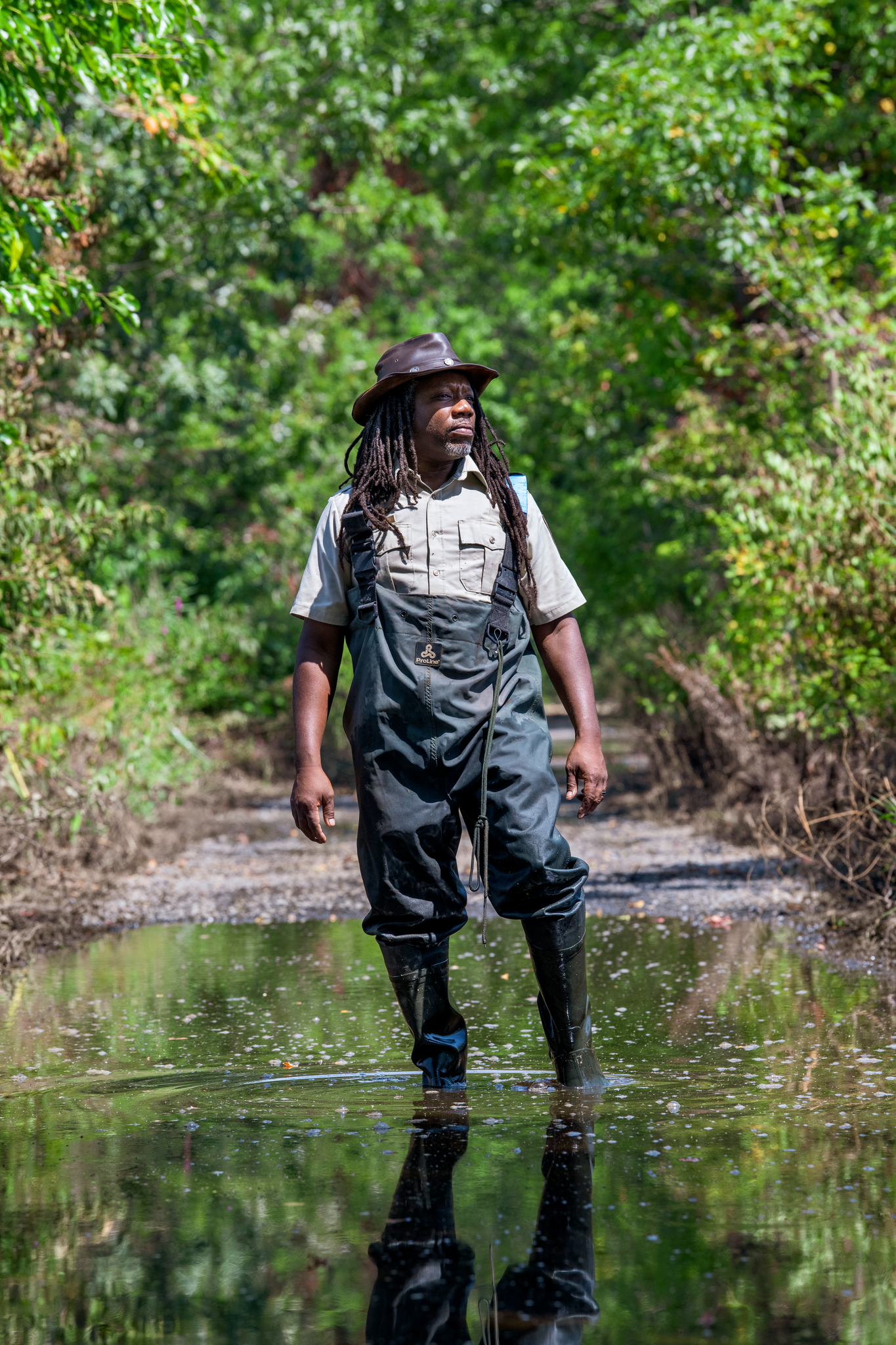
Because the wetlands are no longer there, the water spills out onto the streets in the adjacent neighborhoods. This happens during most rainfall events, but Isaias presented perfect-storm conditions, converging with a high tide during a full moon, when the highest tides occur.
In Eastwick, the storm inundated the Clearview neighborhood and floodwaters flowed through what residents call the planet streets—Saturn Place, Venus Place, Mercury Place and Mars Place—before finally filling the area around the abandoned shell of the George Wharton Pepper Middle School.
“It was horrific,” says Ramona Rousseau-Reid, a resident of Eastwick. “No one saw this coming. People are still cleaning up.”
Rousseau-Reid is the vice president of the Eastwick Friends and Neighbors Coalition, which has been working nonstop to help residents get back on their feet. They started a grassroots flood relief fund and gave more than 100 gift cards, directly from the coalition’s budget, to affected neighbors.
Many Eastwick residents lack adequate flood insurance, if any, she says. They lost vehicles, major appliances and countless personal items. One entire block of rentals was condemned and residents were forced to vacate within 48 hours.
“It’s absolutely an environmental justice issue,” says Rousseau-Reid. “This has been a deprived and disenfranchised community for decades, dating back to the Urban Renewal Plan in the fifties.”
The only solution to chronic flooding in Eastwick is creating more tidal marshes, says Gore. This would serve to both slow floodwaters and create more habitats for the wildlife of the refuge.
Wetlands are now one of many at-risk ecosystems in the country, under siege from the impending threat of climate change and, more recently, the loss of wetland protections.
This year, in April, one day before the 50th celebration of Earth Day, the EPA rolled back federal protections of waterways, replacing the Waters of the United States rule under the Clean Water Act of 1972 with a regulatory standard, entitled the Navigable Waters Protection Rule. The new rule casts wetlands, lakes, ponds and streams outside of the regulatory jurisdiction of federal laws.
This change eliminated critical pollution rules that had safeguarded at-risk ecosystems and drinking water across the country, and put development of floodplains and wetlands ultimately in the hands of developers and farmers, though states will still have the power to step in and protect vulnerable waterways if they so choose.
Why Protect Wetlands?
Wetlands serve as the kidneys of the water system, or watershed. They are an essential filter, cleaning pollutants out of the water and purifying it for drinking. They provide storm surge control, and coastal wetlands, in particular, create a sponge-like barrier to hurricanes and sea-level rise.
Two categories of wetlands are found on every continent except Antarctica: coastal or tidal wetlands, found along the Atlantic and Pacific coasts in the U.S., and in-land wetlands, which often appear along floodplains. The latter includes marshes and wet meadows, swamps and seasonal vernal pools. All of which serve as essential habitats for many species of plants and animals, some of whom are endangered.
“Wetlands are one of the most productive ecosystems on Earth,” says Brett Hartl, the Center for Biological Diversity’s government affairs director. “They are some of the richest biological areas in any ecosystem,” he says. “Losing your wetlands is a death sentence for a lot of wildlife.”
Since the Clean Water Act’s conception, the EPA has never taken a more restricted definition of wetlands, says Hartl of the 1972 law, which was established to protect navigable waters and their adjacent wetlands from pollution and degradation.
“It’s unprecedented,” he says. “This is taking a meat cleaver to a bipartisan approach to regulating wetlands. The EPA’s own analysis said as much.”
Prior to this rollback, the most significant change in the protection of wetlands in the U.S. was an executive order, originally issued by President Jimmy Carter in 1977, and later signed into law by George H.W. Bush in 1989, says Derron LaBrake, senior professional wetlands scientist at Wetlands and Ecology, Inc., a local environmental consulting firm. The order required that there be “no net loss” of wetlands, meaning all filled wetlands had to be simultaneously replaced with an equivalent amount of wetland creation, says LaBrake.
In the 1980s the U.S. Army Corps of Engineers was initially responsible for regulating activities in Waters of the U.S. (WOTUS). “The protection of wetlands and waters has been a pendulum swinging back and forth for a long time now,” says LaBrake. The Obama administration successfully clarified a scientific definition of what qualifies as WOTUS, which, he says, should have been done in the Clean Water Act.
“Many of the really good practicing wetland scientists I know feel as though the original Corps manual was the way things needed to stay because it was written by scientists,” says LaBrake. “In my opinion, most of the regulatory rule changes that have been put into effect since the late 1980s have been corrupted by non-scientific partisan agenda, driven by greed. I really don’t understand why our American society has stopped listening to scientists.”
There is immense lobbying pressure from parties seeking to profit from reduction of water and wetlands. This is a battle that has been going on for decades, pitting environmentalists against developers and big agriculture.
Wetlands are often seen as valueless by the latter groups. Preserving water quality limits those seeking to profit from building houses or growing commodities on that land.
“It’s [a problem of] the interests of the individual being weighed out against the interests of the many,” says LaBrake, indicating that protecting wetlands are in a greater community’s best interest.
According to the U.S. Fish and Wildlife Service, over the past 200 years, an average of 60 acres of wetlands have been lost every hour in the contiguous states. This equates to a loss of more than half of all U.S. wetlands.
“I really don’t understand why our American society has stopped listening to scientists.”
If wetlands and streams were valued, there would be very little flooding, says LaBrake. The U.S. has terrible water quality as a result, which is why so much money is spent cleaning water before it’s drinkable—approximately $100 billion per year, according to the National Association of Clean Water Agencies. It’s also why the U.S. spends millions of dollars per year cleaning up after floods, he adds.
The new rule does not consider the complexities of hydrology, says Hartl, particularly the fact that water is connected below and above ground.
“[The rule] instituted a new regime based on a non-majority opinion, that in the aggregate, over time, will reduce the amount of water and streams protected by about 50 percent,” says Hartl.
Part of the problem is that it is very difficult to prove that a wetland is a wetland. It requires an intimate knowledge of an area, says Hartl. Wetlands are often seasonal—there are dry and wet periods—and a stream could exist only six months of the year.
“Developers like wetlands because they’re flat and easier to build upon,” says Hartl. “But it’s incredibly short-sighted.”
Filter and Habitat
“In general, most people don’t understand or appreciate wetlands. They simply see a swamp; a mosquito-breeding habitat,” says Fred Stine, citizen action coordinator of the Delaware Riverkeeper Network. “However, that changes for many people once they understand that wetlands are one of nature’s most important filtering systems that help protect and clean our drinking water supply and reduce flooding.”
Our waterways are protected through a series of local, state and federal regulations: a system of checks and balances, he says. But politicians can change those regulations and how they are enforced and waterways can swing from greater protections to less, depending on who is in charge. Right now, at the federal level, those water protection regulations are being dismantled to allow more pollution, more wetlands to be filled, and weaker enforcement, he says.
“If you don’t have strong wetland protections and regulations, you end up with flood and water-quality issues,” he says.
As they stand, Pennsylvania’s state ordinances are likely too weak to protect vulnerable waterways at the same level as the EPA’s now-rolled-back regulations.
“All wetlands are important to humans and to all living creatures that depend on clean and healthy water for survival,” says Stine. “Not just the large ones like the Everglades and the Tinicum Marsh, but the little ones in the woods at the end of your street, behind the school, and the other nooks and crannies in our communities. They all play an important role in our quality of life.”
Though Philly is at the bottom of the hill, geographically, some great things can be done at the bottom of the hill, he says. The City’s Green City, Clean Water program has created many stormwater management projects, such as rain gardens and the de-paving of parking lots, allowing for the reduction of pollution into the Delaware and Schuylkill Rivers, the sources of Philadelphia’s drinking water.
These projects are located in nearly every neighborhood in Philly, providing important hands-on educational opportunities for the next generation. But while these projects are great, they don’t fix everything, says Stine.
There is a hierarchy of consequences of these rollbacks, with flood protection, water quality and drinking-water supply at the top. Next to more visceral consequences of flooding and drinking-water quality, is the loss of wildlife diversity, he says.
Aquatic animals, particularly reptiles and amphibians, are most affected by wetland loss in Philadelphia’s waterways.
Many amphibians are considered “indicator species” because they’re sensitive to changes in water quality, so the health of a body of water can be assessed by the health of the amphibian population that lives there.
At-risk species living in Philadelphia’s wetlands include the state-threatened red-bellied turtle and eastern mud turtle, the northern cricket frog and Atlantic Coast leopard frog, says Matthew McCann, a research and policy associate at the Delaware Riverkeeper Network.
The great egret and black-crowned night heron, which was once considered a common nesting heron in Pennsylvania, are both state endangered birds whose populations are decreasing, likely due to wetland loss. The John Heinz refuge has been designated by the National Audubon Society as an Important Bird Area, providing a sanctuary for 90 species that regularly nest and 300 species altogether.
Erik Silldorff, Delaware Riverkeeper Network’s staff scientist, says the list of at-risk fish and aquatic animals goes on to include shortnose sturgeon, Atlantic sturgeon, eastern pondmussel, tidewater mucket, yellow lampmussel, dwarf wedgemussel, horseshoe crab, brook trout and the bridled shiner.
“If you’re shrinking that biodiversity,” Stine says, “it doesn’t happen in isolation; it’s all connected, and the consequences will be widespread.”
Still, he doesn’t anticipate any action taken on the matter to be proactive.
“Humans are a crisis-driven species,” says Stine. “It takes devastating flooding or the threat of extinction of a majestic species to wake us up.”
State Wetland Protections
The Pennsylvania Clean Streams Law, enacted in 1937, does give the state a leg up for protection of vulnerable waters, says Carol Collier, senior advisor for watershed policy and management at the Academy of Natural Sciences of Drexel University. The law was designed to protect not only the larger existing bodies of water, such as mountain streams and rivers, but also the “underground water that navigates through cracks and spaces between rock and soil.”
It gives the Pennsylvania Department of Environmental Protection (DEP) “broad powers” to protect the streams and wetlands in a given watershed.
“Since this is a law of the commonwealth, it is not affected by the WOTUS decision,” she says.
“ [Y]ou cannot do scientifically informed water management without creeping into land management, which is much more politically perilous”
While this law puts Pennsylvania in a better position to fight for protection of the smaller streams and wetland areas than other states, DEP is significantly underfunded and understaffed, says Collier, and may not be able to handle the workload to protect vulnerable bodies of water.
Furthermore, the EPA and Army Corps of Engineers will be using less stringent definitions of what makes a wetland a wetland, and state and federal agencies will likely not be “on the same page,” she says. Getting people to care about these subtle but essential distinctions will be difficult, but necessary, Collier notes.
Moving Forward
in a natural state, the highest points of a watershed contain tremendous amounts of natural storage, says Karl Russek, director of programs and applied research at The Water Center at Penn. Floodplain wetlands, in particular, function as organic tubs, providing temporary storage for floodwaters from rain storms or snowmelt events.
When human activity gets in the way of these areas that fill with water, whether through tree removal or construction of roads and parking lots, thus converting those headwater areas into impermeable spaces, it results in a much more “erratic,” “flashy flow regime,” says Russek.
“Which aggravates flooding conditions,” he adds, “because a lot of that natural storage is gone.”
In the world of hydrology, scientists refer to these aggregations of small impact as “death by a thousand cuts.”
“The issue at a watershed scale is that any one small change that may have a fairly minimal local impact aggregates across a watershed,” says Russek.
In Philadelphia the consequences of these small impacts result in issues like persistent flooding events in low places, like the banks of Cobbs Creek and Darby Creek.
“Outside hydrology is the function that these various features play in regulating nutrient transport, carbon transport and general stream health,” says Russek.
These rollbacks could increase the rate of loss of habitat and hydrologic features, which will aggravate flooding events and impact water quality, says Russek, noting the loss of natural systems on top of climate change may be more than we can bear. “It’s kind of a one-two punch. We need to really understand: there will be an impact and it will be aggregated across the watershed,” says Russek.
It’s important to realize how far we’ve come, he says. The improved health of both the Delaware and Schuylkill Rivers is remarkable.
“The ‘easy work’ is done, in terms of regulating massive point sources,” he says, referring to end-of-pipe discharges that are easy to identify, measure and regulate from places like wastewater treatment plants and industrial complexes. “Non-point” sources, by comparison, are characterized as many small inputs, like stormwater runoff, which sweeps everything from streets, parking lots and lawns and can aggregate into a much larger impact.
“As our understanding of these [water] systems improves over time, the problems become much more complex, and the solutions become much more distributed,” says Russek.
The solutions come in the form of a thousand township meetings and land-use planning applications. “A classic issue with water management is that you cannot do scientifically informed water management without creeping into land management, which is much more politically perilous,” he says.
Compliance with thousands of contraction permits, and enforcement of those permits, he says, is where it gets hard. According to Russek, finding ways to work upstream and downstream across political boundaries is the biggest challenge confronting Pennsylvania in the face of building stronger regulatory systems that protect our wetlands.
“Watersheds don’t respect political boundaries,” he says.


